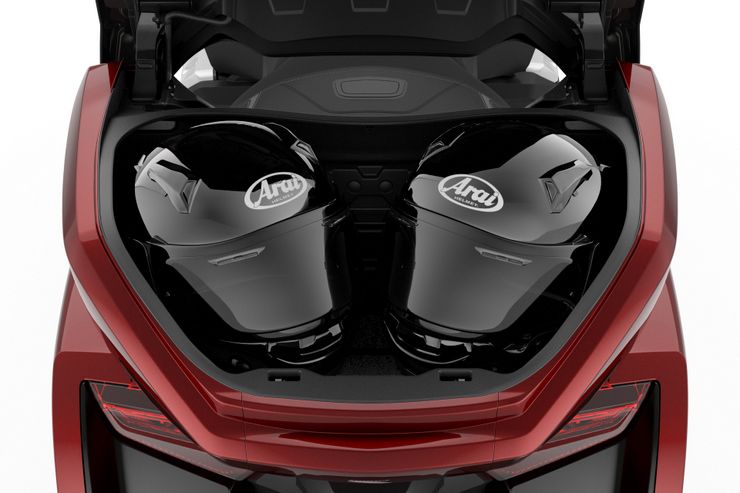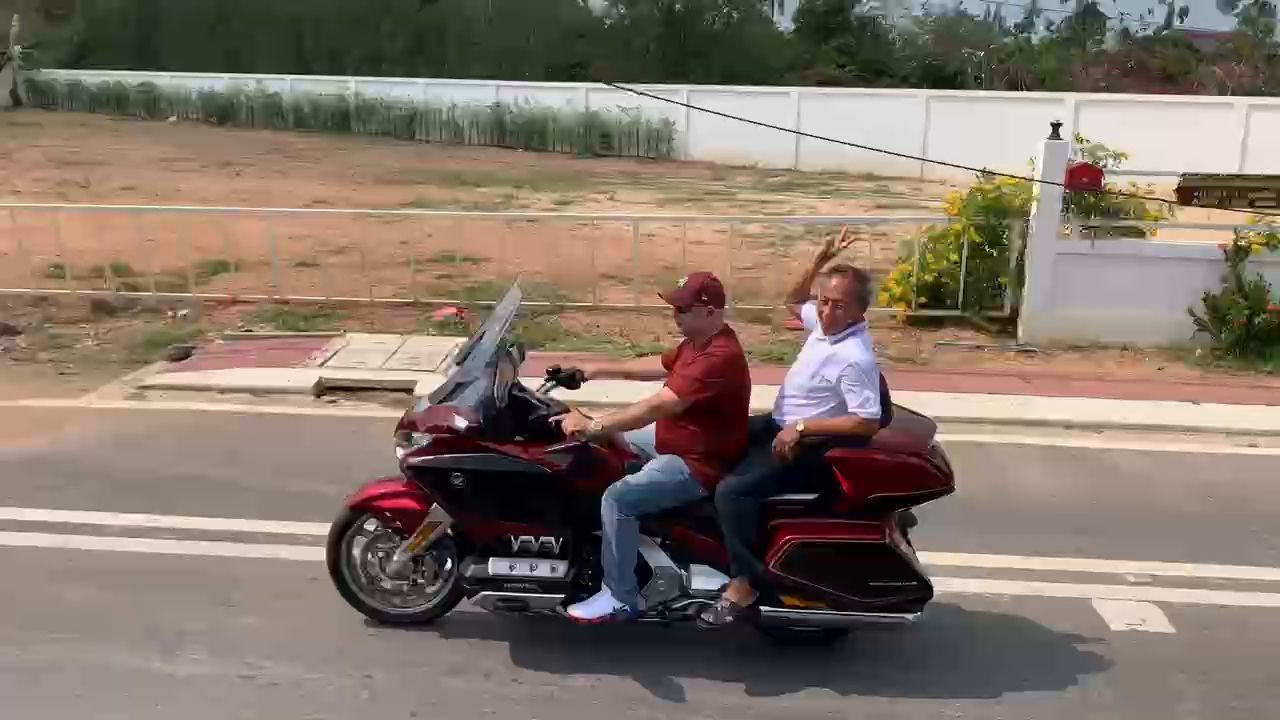Honda Gold Wing 2018
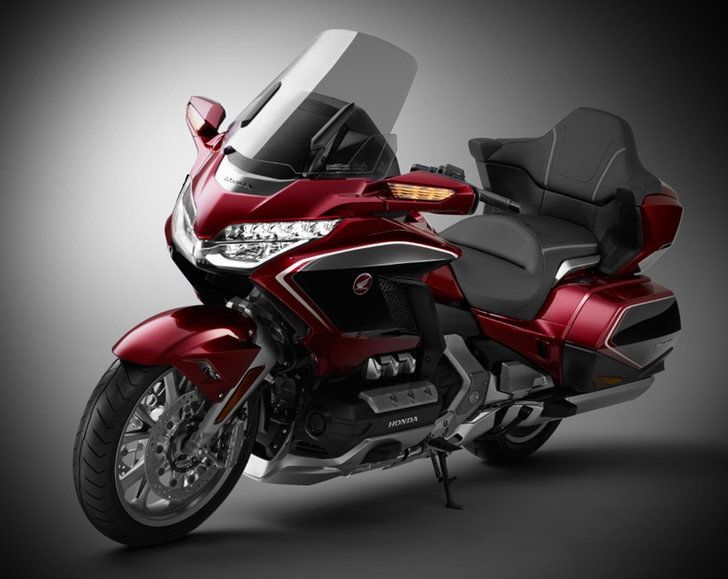
For more than 40 years, the Honda Gold Wing has been a hyper-functional icon of long-distance luxury touring. Couch-like comfort, huge storage capacity, and long distances between gas stops were features that riders came to love and expect from the GL. Redesigning such an important motorcycle was no easy task, but Honda set to it with three main goals: to build a lighter weight, more compact, and more technologically advanced motorcycle than any on the market. To achieve this, Honda completely redesigned the flat-6 engine, introduced what it's calling Double Wishbone front suspension, added a huge array of infotainment features, and even offers an automatic seven-speed Dual Clutch Transmission. These changes and the sportier new look and feel are meant to both attract a new generation of riders to the Gold Wing while satisfying the Wing's core, albeit aging, demographic with a lighter, easier-to-handle luxury touring bike.
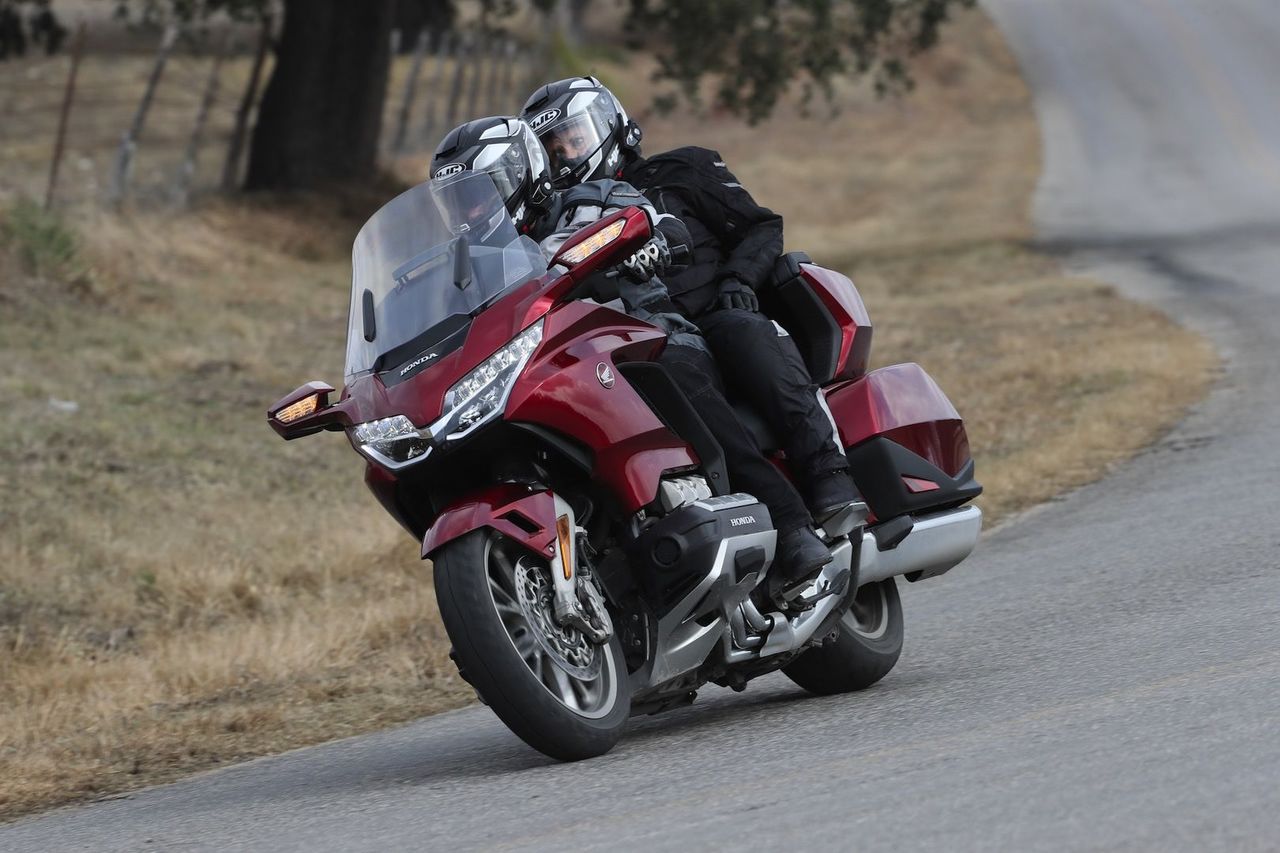
Honda flew a small group of journalists to Twin Ring Motegi, the company’s racetrack located about 100 miles north of Tokyo, for an exclusive test of its flagship motorcycle two months before its scheduled mid-January arrival in US dealerships. As we arrived at the track, we got our first glimpse of the new 2018 Honda Gold Wing (the bagger model) and Gold Wing Tour (with top trunk). It was immediately apparent the new Honda had been radically redesigned—it was sleeker, slimmer, and had more flowing lines. But I was eager to dive deeper into the technical changes by experiencing the bike firsthand.
What better way to warm up for testing the 2018 Gold Wing than spending the last three weeks getting to know the 2017 Honda Gold Wing riding the highways and byways of Southern California. The current bike performed incredibly well for a bike of its size, with crisp, responsive handling at any speed, an impressive lean angle, loads of power wherever you find yourself in the rev range—it was clear why this bike had cemented its place among riders as the go-to motorcycle for long distance touring.
Infotainment
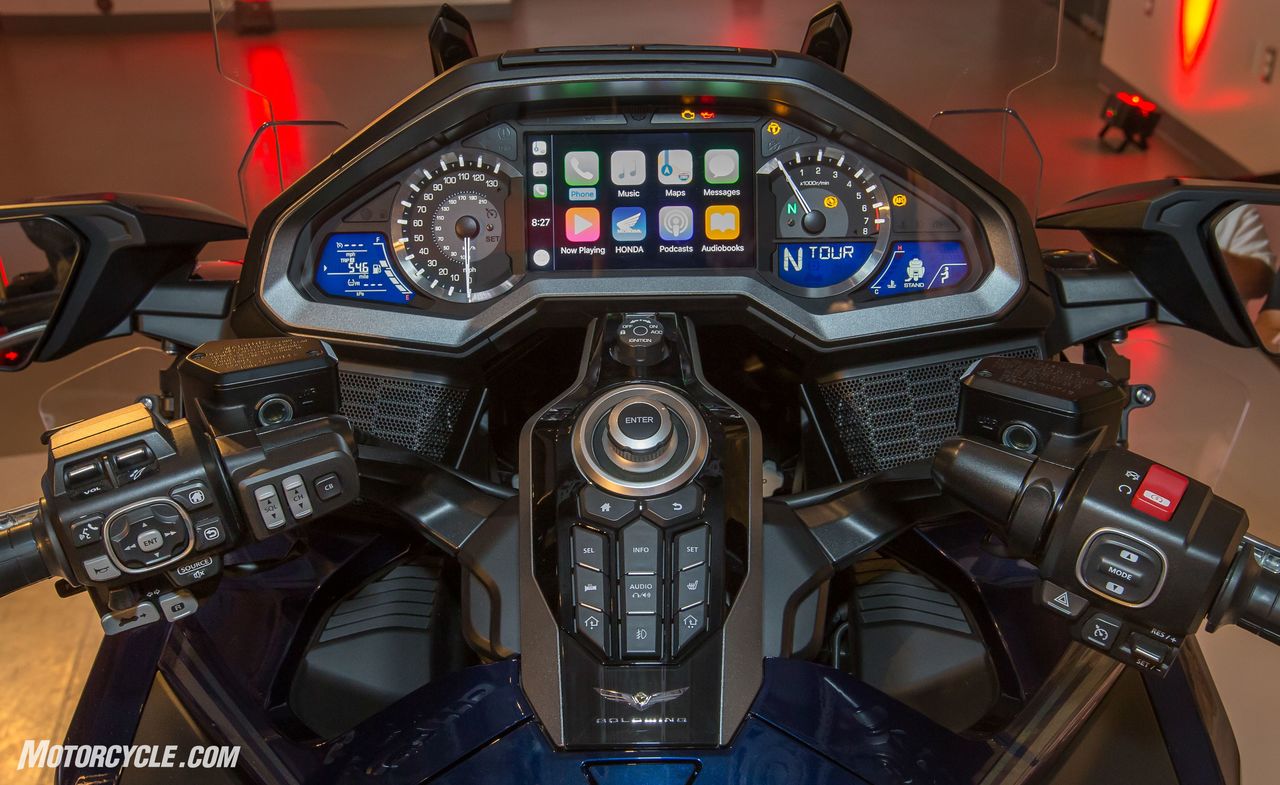
But the infotainment experience was lacking and the user interface cluttered and antiquated. Huge masses of buttons on either handlebar, on the sides of the lower fairing, and, impossibly, again on the dash. There is no Bluetooth and the only way to connect a smartphone for audio is in the trunk. CB radio controls are on your handlebar whether you have the accessory installed or not. Rather than getting your song name and album title, you would just see something like “song: 567/2081” It was astounding to think that an engine and chassis released in 2001 could still stand up so well to in-class competitors 16 years later, but the infotainment and user interface were showing that age despite a few updates for the Wing over the years.
Curse my millennial tendencies, but I was sort of baffled that such a tech-conscious company would go so long without updating little things like Bluetooth, which are largely standard on competing touring models. Luckily, Honda went above and beyond with the new Gold Wing, integrating all of the entertainment tech I wanted to see, and merging that mass of buttons into a much more intuitive system controlled either at the handlebar or on the dash, depending on your preference.
For starters, there are now three USB inputs: in the trunk, left-side saddlebag, or forward fairing pocket. Bluetooth is now standard and pairs quickly with just a few clicks through the menu. Taking it a step further, this is the first motorcycle to make use of Apple CarPlay, which works with a connected headset and Siri’s voice commands to control Maps, Apple Music, phone calls, and dictated texts. On both the Gold Wing and the Gold Wing Tour, I was impressed by how loud and clear the audio was, as well as how easy it was to navigate the new software.
Testing on the racetrack, we were able to get up to triple-digit speeds and still hear the Lady Gaga album that the engineers had pre-loaded for our listening pleasure blasting through the speakers. In fact, I think my “gaa gaa, ooh laa laaa” lap was my fastest one. Both aesthetically and functionally, Honda gave me everything that I wanted to see and more in terms of infotainment.
While that may be a bit more on the infotainment than some of you want, let me refer back to those millennial tendencies—I had to go 10 laps without looking at my phone, guys! These additions may been seen as distracting, but they just make the info we want (and will get, regardless) more accessible and safer to access while riding.
Suspension
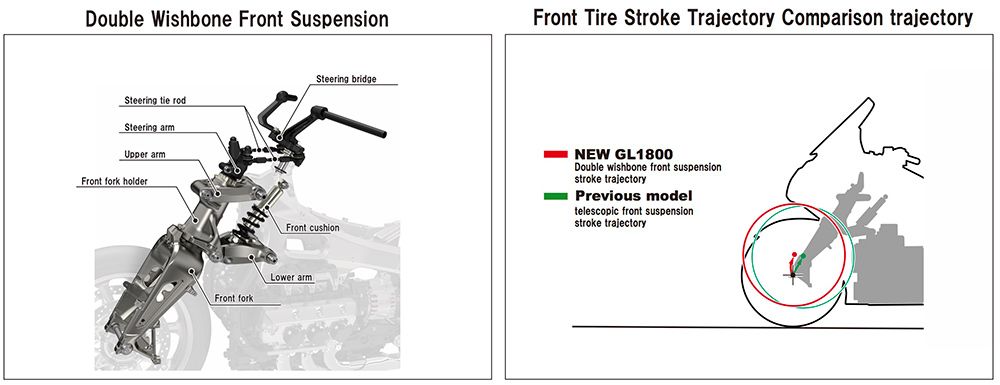
The biggest change in performance comes in the form of the new Hossack-inspired Double Wishbone front suspension. Similar to BMW's Duolever used on the K1600GT/GTL, this system separates the Showa coil-over damping unit from the fork holder responsible for steering, which results in lighter handling and 30 percent less shock transferred from the road to the handlebar, says Honda. Other advantages? A conventional telescopic fork has significant friction between the inner and outer tube, but the Double Wishbone massively reduces this for a more supple, responsive ride and improved front tire grip in most conditions. Further, as a conventional fork compresses the wheel moves closer to the engine thanks to the necessary rake.
The Double Wishbone moves the front wheel moves on a vertical axis (rather than a diagonal one along the path of the fork tube) reducing the amount of space needed behind the front wheel to allow for compression, which allows the engine to be moved forward in the chassis. Double Wishbone also permits easy tuning of exactly how much dive occurs (if any) under braking. For a more natural feel to all of us who have ridden a lifetime of bikes on a conventional fork, Honda tuned in a small degree of dive. You can read more about the Double Wishbone in Kevin Cameron's speculative pre-release piece, or check out the image below to get a better idea of how it works.
The ’17 Gold Wing’s front suspension hadn’t seemed at all inadequate, but riding the two bikes back to back was like night and day. Turn 11 at Motegi is sharp and the approach is a long straight decline—I was able to get up to 110 mph and not touch the brakes until I had less than 100 meters before the corner, slowing down with room to spare. The lightweight feel of the front end transformed the ride in all the best ways.
Engine
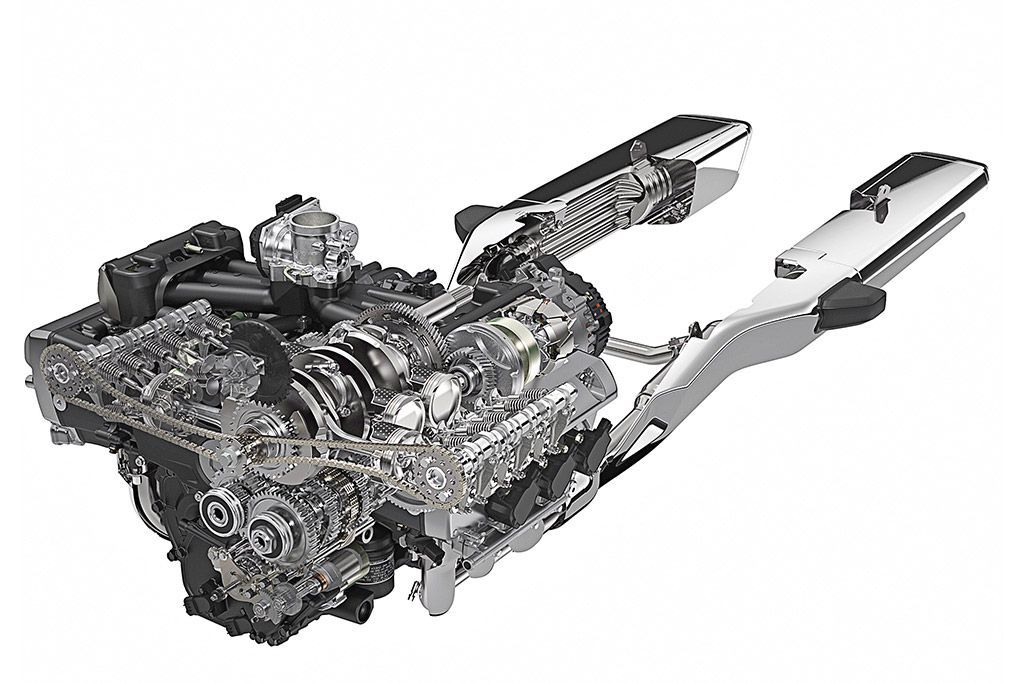
About the only things that remain the same with the engine is that it is a flat-6 that displaces 1,833cc. The redesign focused on lighter weight, smaller size, and improved fuel economy. Bore was reduced by 1mm, and stroke has been increased by 2mm for square 73.0 x 73.0mm cylinder dimensions. New high-strength steel alloy allows for a thinner crank webs and less distance between each cylinder, which combines with other internal upgrades resulting in an engine that is now 29mm shorter end to end. Even with the switch from two-valve to four-valve, which increases efficiency but adds weight, the manual-transmission engine is 13.7 pounds lighter, and the DCT unit is 8.4 pounds lighter than previous manual models.
A Unicam valve train like the one used in Honda's CRF450R enables the removal of the valve-lifter support structure, resulting in lighter weight and a more compact design. Couple the more efficient engine with overall weight reduction and an 11.8 percent more aerodynamic design, and Honda says this results in a 20 percent increase in fuel economy. So, even with fuel capacity reduced by 1.1 gallons to 5.5 gallons, Honda states we won't see any decrease in range per tank. With the engine further forward, the engineers were also able to move both the rider and passenger farther forward, keeping weight as close to the bike's center of gravity as possible.
DCT (Dual Clutch Transmission)
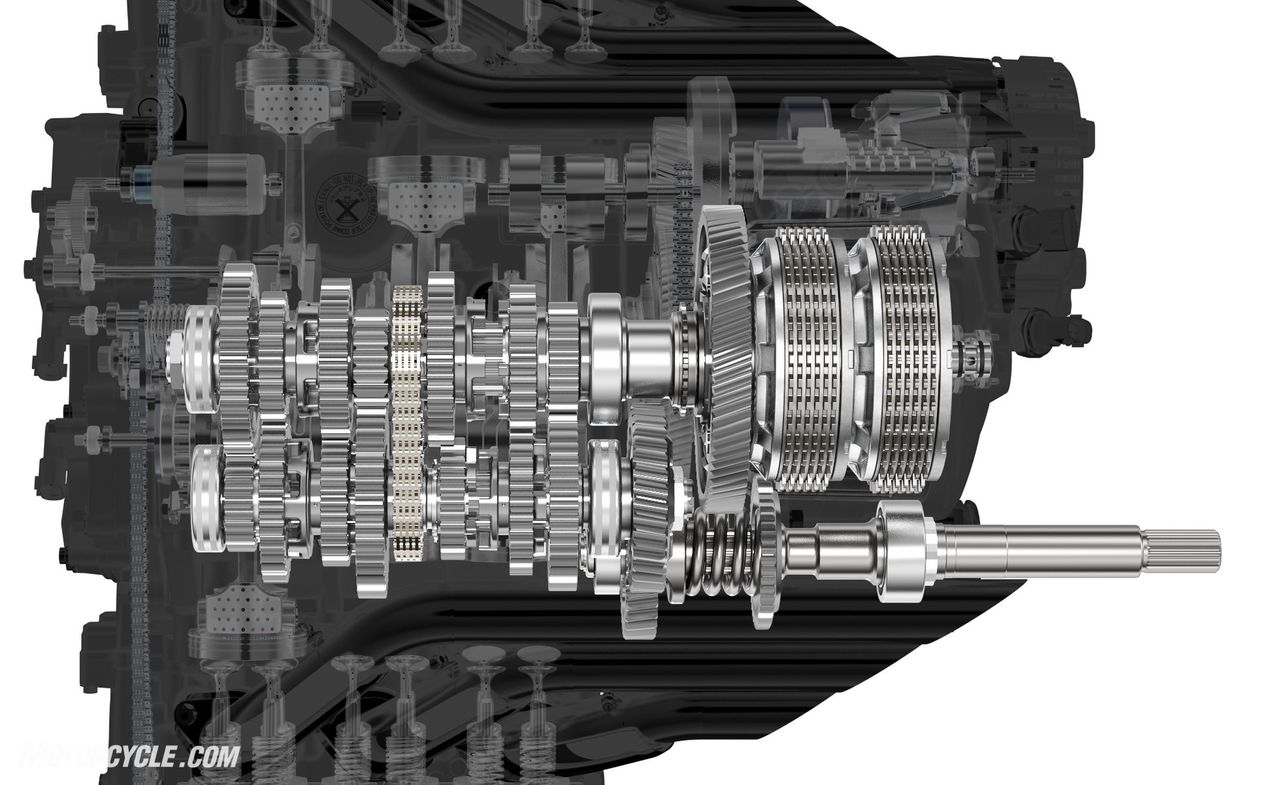
This was the first bike that I have ever ridden with Honda’s Dual Clutch Transmission, and like most people who haven’t tried it before, I was wary—I didn’t expect to like it. Combined with the ride-by-wire technology and the four new ride modes, the automatic-shifting transmission worked incredibly well. I started out in Touring mode, then tried Economy (if only for a moment), then Rain before finally switching to Sport. Being on the racetrack, I was eager to see how Sport would perform but knew other modes would feel underwhelming in comparison if I jumped the gun. Touring mode was just what you would expect, good power when you twist the throttle, but it’s not snapping your neck back or anything. Economy, as you might expect, was on the boring side, putting me in seventh gear by the time I was up to about 50 mph through the first turn on the track. Rain mode was more cautious, with a little softer response to the throttle off the line. And Sport mode made me fall in love with the DCT.
Just twisting the throttle delivers optimized output wherever you are. Manual push-button shifting using “+/-” paddles located at the thumb and index finger on the left hand worked great. But while I really expected to like the manual more (I tend to like more control), I didn’t miss shifting one bit. The effortless ride and still massively adrenaline-inducing Sport mode quickly dismissed any misgivings I may have had.
Traction control is available only for the Tour models in the form of Honda’s Selectable Torque Control System (HSTC). While there is no inertial measurement unit to sense lean angle, the bike uses wheel-speed sensors to determine when it is cornering for HSTC, ride modes, and ABS. Even riding these bikes hard on the track, I didn’t feel that the HSTC was overbearing at all.
When it comes to the manual transmission, “clunky shifting” wasn’t on my list of complaints from last year’s model, but now shifting is virtually silent and incredibly smooth. With the addition of a slipper clutch and a cam-damper on manual models, lever effort is reduced by 20 percent, and shift shock on downshifting has been greatly deceased. It wasn’t a shortcoming before, but now it’s a strong point. The six gears of the manual transmission have the same overall ratio range as the seven gears in the DCT, but engineers thought seven-speed manual was unnecessary and shifting through seven gears would be too much. With DCT, however, the added gear helps to alleviate shift shock and makes for a smoother transition.
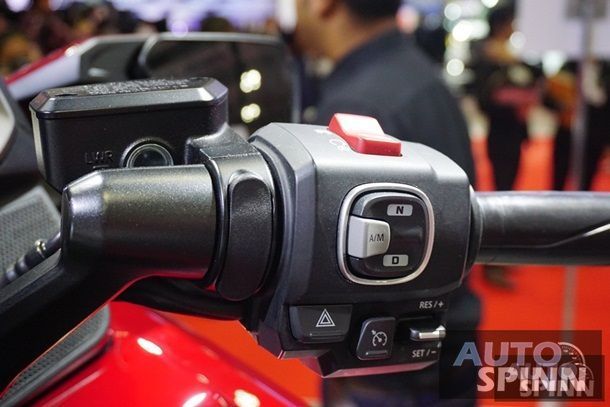
Other Tech and Overall Finish
When Honda said that US bikes weren’t getting the Idle-Stop technology that the rest of the world was, I was completely fine with it. I don’t think most American riders would really like for their bike to automatically turn off at a three-second stop, but I had to wonder how they could make a smooth Idle-Stop with a quick response. It’s all thanks to the Integrated Starter Generator System (which we do get in the US). As you may have guessed, it integrates the starter and the generator motor into one unit, reducing weight and improving the quickness and quietness of starting the engine. It’s honestly sort of jarring at first. You push the starter button, and the bike is on. No revving or multiple turns of the engine before it fires; it’s just on, and it’s one of the many details that contribute to the overall luxury feel of the new Gold Wing.
Every rider interface and touchpoint has been improved, with functional and aesthetic changes that elevate look and feel. A layer of clear coat has been added to paint that’s been given additional pigment, adding depth and luster. The saddlebags and trunk lid all open with small buttons—as opposed to bulky levers—and hinges all have dampers so they don’t slam open or shut. The buttons at the handlebar all feel sturdy and premium—nothing feels or looks cheap. Each bike is equipped with keyless ignition that not only allows you to start the bike without a key, it will sense when you walk away from the bike and lock the bags, and unlock them when you come back. A lot of the luxuries that the car industry has been enjoying are integrated into this bike, and it’s awesome.
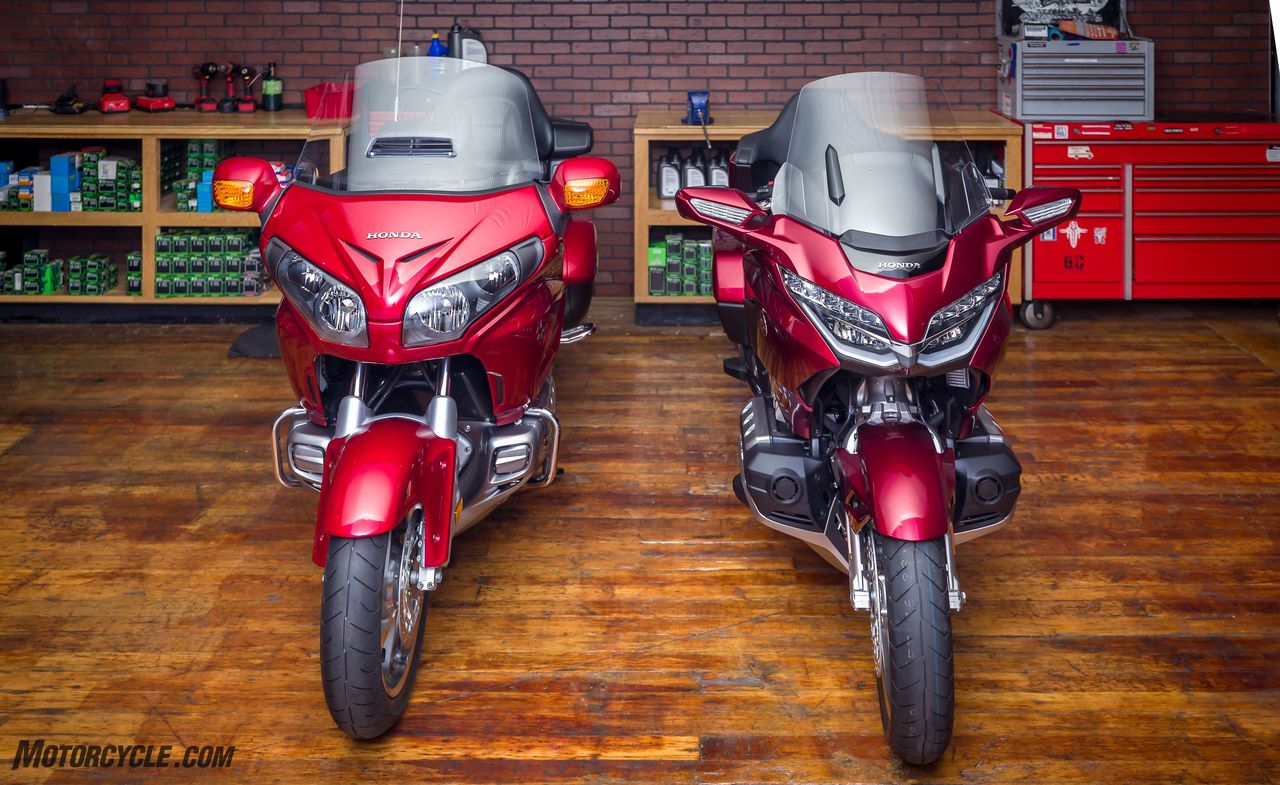
Passenger Experience and Storage
The adjustable windscreen on both the Gold Wing and the Gold Wing Tour works very well. Opposed to last year’s system which reduces wind to a stifling level much of the time, you can actually get a little more ventilation to your body on this bike if you want to. A small fin pops up from the fairing to help direct some air if you need some breeze. When I rode as a passenger, I was getting a lot of wind with the screen down but was surprised at how well I was covered with it up, even though I’m 6-foot-4. The passenger seat, however, wasn’t as comfortable as that used on previous models. It just wasn’t as plush. Honda cut out the couch, but the couch on the back of that bad boy is what helped sell so many passengers on its ride. Will potential passengers who are going to be spending time on the back of this bike care about the lighter weight, added fuel economy, and improved all-around performance? Or will they have a seat on each and decide that they like the ’17 more simply because they are better supported on the plush, oversize cushioning of the older model?
I get that Honda is trying to move Gold Wing away from the couch image, and the company deserves credit for this. Anyone who has ridden a Wing knows it is way more than a couch on wheels, but the Gold Wing passengers have always enjoyed a luxurious seat unlike that of just about any other motorcycle. The rider’s seat is cut down for more aggressive riding and has options for a backrest or a higher back. The passenger seat is cut down but enjoys none of these options, and now the back is slightly more forward-tilted and the grab handles underneath the rider are in a much less ergonomically friendly position. With the sportier feel of the 2018 bike, I wish the passenger had a little more support against hard braking, like the more ergonomically positioned handles or more leaned-back seat of last year’s bike.
